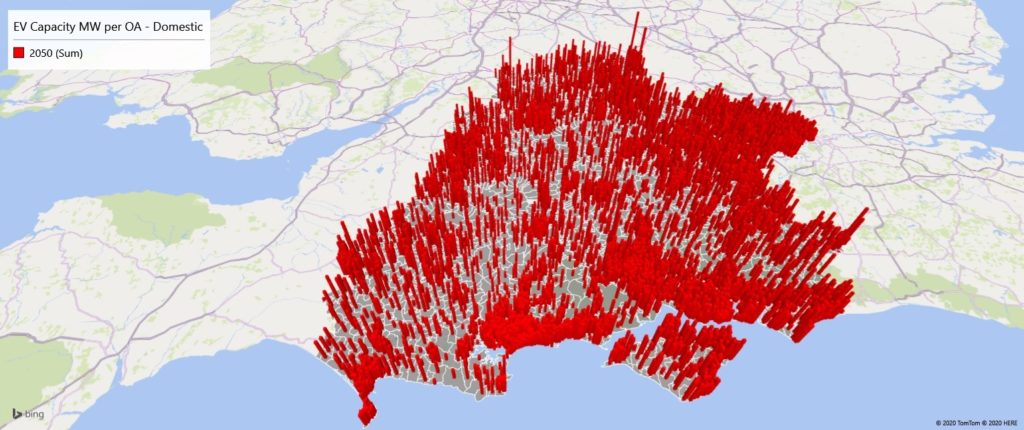 Distribution network operator Scottish and Southern Energy Networks (SSEN) has published data that shows the challenges local and national governments face in fairly delivering net zero.
Distribution network operator Scottish and Southern Energy Networks (SSEN) has published data that shows the challenges local and national governments face in fairly delivering net zero.
Undertaken by Regen, the research focuses on projected uptake of low carbon technologies, such as electric vehicles, heat pumps and PV by ‘output areas’, a form of geographical zoning used by local authorities. The findings suggest there is a risk of a postcode lottery when it comes to enabling infrastructure.
For example, two output areas in Reading which are just a few hundred metres apart are due to have 94 domestic off-street chargers in the first output area, compared to just 40 in the second. These neighbourhoods have very similar housing types and levels of off-street parking which means prior to publication of Regen’s research, the assumption would be that they would see comparable levels of charging provision.
SSEN said nobody should be left behind in the net zero transition, and so has made the full data available here. It hopes national planners, local authorities and local stakeholders alike will use use it to enable a balanced transition, using the data to develop a clearer picture of when and where discrepancies or constraints may emerge on the network, allowing them to be tackled before they impact customers.
‘Keyhole surgery’
 “The detailed data that we are publishing represents keyhole surgery for future network management,” said SSEN EV Readiness Manager, Richard Hartshorn.
“The detailed data that we are publishing represents keyhole surgery for future network management,” said SSEN EV Readiness Manager, Richard Hartshorn.
“Our projections of low carbon technology (LCT) uptake are broken down to a near street-by-street level of granularity, and on a year-by-year basis. They also split out the different types of LCTs, differentiating for example between car park charge points and domestic charging, which will allow communities to gain the clearest possible understanding of how to plan for decarbonised transport.”
Details and data here.



